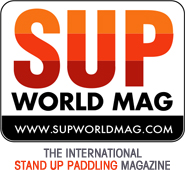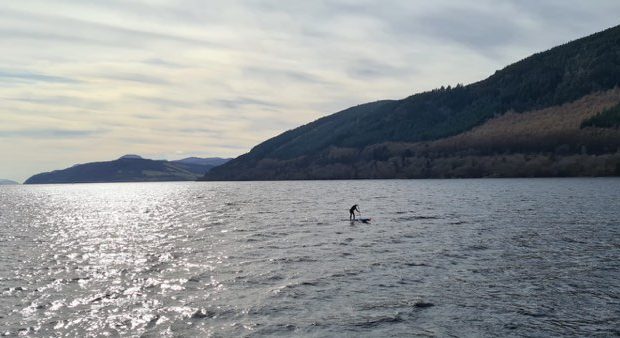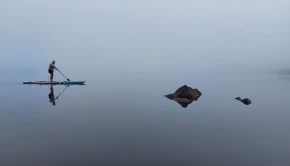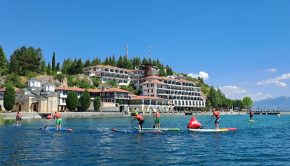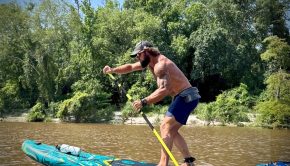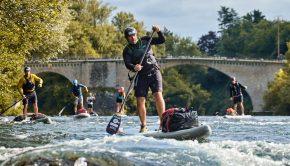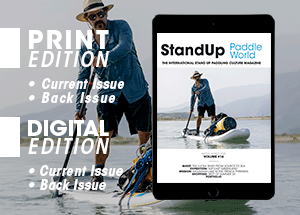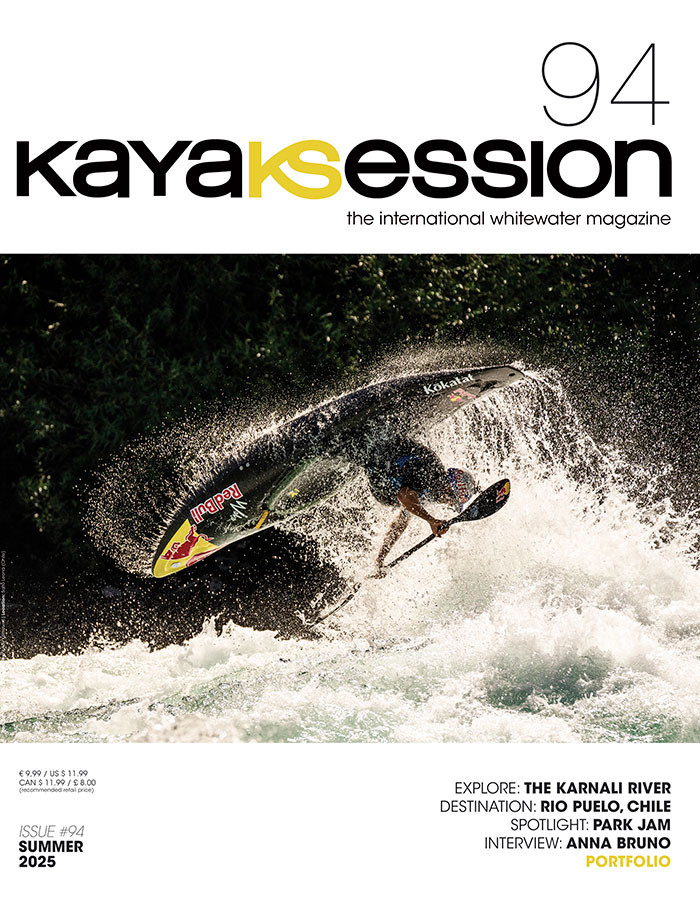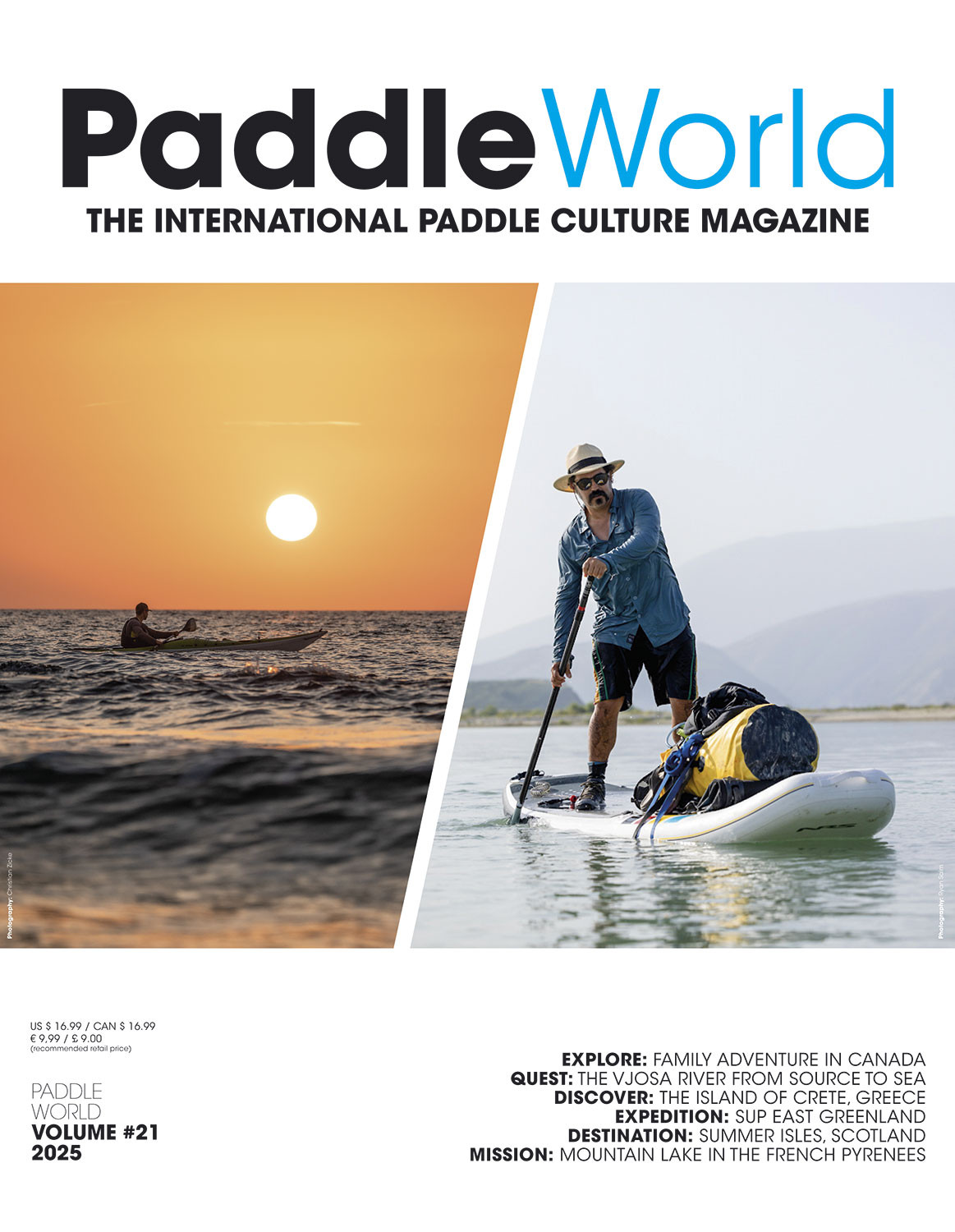Fastest Crossing of Loch Ness | New Guinness World Record
We interviewed SUP Paddler Mark Salter, who has just broke the record for fastest crossing of Loch Ness in Scotland on a SUP! Heres what he said;
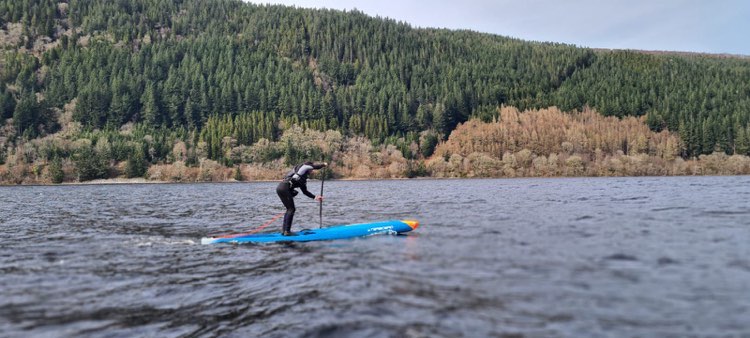
How long have you been Paddle Boarding for?
« I’ve paddled for 7 years and raced for 4 of those. I started off with short distances and in my first race season won the GB Sup technical series and was 2nd in their distance series on a 12’6 board. Since then, I moved to 14ft boards and have been fortunate to travel and complete in races such as Chattajack USA, GlaGla France, SUP 11 City Tour Netherlands, The Norfolk Broads Ultra and The Paddle Skedaddle UK. I won Silver at the UK National Sprint Regattas but I have a fondness for endurance racing and I perform well in those. At 48 years of age, I find endurance racing is kinder on the body than the sprints or technicals and I find these longer races are less pressure for me. I train most days on the canals of Nottingham. My wife runs SUPFitness.co.uk which an excellent SUP school here in Nottingham. We travel often with our team for adventures in the UK and to international race events. »
How much training’s done to achieve a record like this?
« I was always pretty sporty but I never in my life trained for anything until I found this new love of endurance racing. Training is now part of my daily life. I’m on the water 5 days per week. I vary the time spent training – usually from 1-2 hours but with at least one longer session per week. Some months are more focused on volume where the time spent on the water may be up to 15 hours per week. I cross-train on days when the water isn’t ideal. I like the stepper and the static bike. I now also incorporate strength & conditioning into training, to keep a balance in the body. I’ve found recently that this really helps with paddling Ultra distances.Loch Ness was a relatively short paddle for me so I didn’t need to train fitness for it. The challenge was that it’s very choppy and I’m a flat-water paddler. I visited the Lake District to try to train in some bigger, more choppy water but it was nowhere near to the scale or difficulty of Loch Ness. »
What made you choose Loch Ness?
« I have a couple of Guinness World Records in the planning stages and I knew that, for me, Loch Ness would be the most difficult. It’s a beautiful Loch but with many challenges. It’s notoriously unpredictable, normally with high winds and cold messy water. My rationale of doing the most difficult first, was that (assuming I conquered it) I’d then have the confidence that I could achieve other challenges. In that way, it was a gamble, which I feel has paid off. »
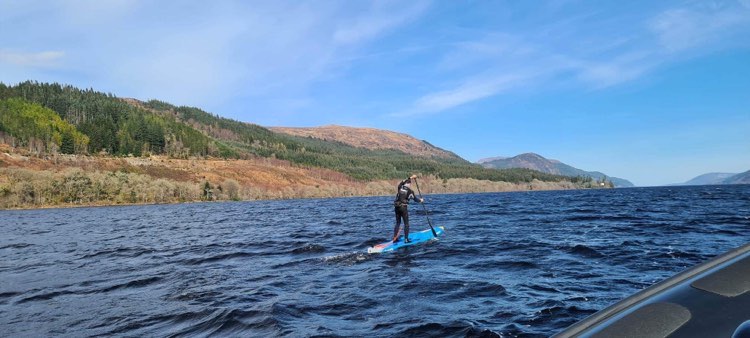
What gear did you choose for the paddle?
« I purchased a pre-loved 2018 Starboard Allstar 23.5. It is by far the most stable hardboard that I’ve ever ridden. It has a concave hull and a huge 342L volume to keep me afloat when waves would be hitting me. I knew there would be some cross wind and this gave me the best chance of staying upright. It was a really good choice of board. I did have some splashes but the board has a flat deck so I could hop back on very quickly!I used the Starboard Lima paddle. I use this paddle every day. It’s powerful for a relatively small blade.Clothing wise, I had a lot of kit – probably too much. The water of Loch Ness is super cold so I wore dive boots, ski thermal socks, Sealskin dry socks, neoprene leggings, Vaikobi thermal top, buoyancy aid and even a buff – I had to stop to take that off as I soon overheated. Despite having a safety boat support crew, I also carried this same equipment along with ski mitts in my bum bag. I wished that I’d strapped that to the deck as I felt heavy throughout the event, especially when I was wet from swimming a few times. I’ve learned from bitter experience though, that it’s better to have all the kit; to keep safe and warm than to not have it. »
How do you feel it went for you and was this a fundraiser event or was it for a personal goal?
« I did this one as a personal challenge; just because I wasn’t sure how it would go and on which day we would attempt it, due to the weather. I didn’t really want any pressure or expectation so I didn’t tell anyone (aside from a few close friends) that I was doing the challenge until we were actually on the water.I was nervous whilst we were in the boat going to the start line as the waves were really messy not one wave like at the sea but many bumps going in several directions. The wind was strong (a pure side wind) and it was pushing the waves into both banks of the Loch. There was therefore no shelter from the wind and no easy route across. The first section of my challenge was really difficult. Within just a few hundred metres I was pushed into the North Bank and had to paddle back out towards the middle. I had 4 splashes and felt that my time would be very poor. I wanted to achieve 4.5 hours (the task for me to complete the record was 6 hours). At this early stage, I thought that this wasn’t going to happen. With the support of my wife, who was in the safety boat and talking to me throughout, I kept my composure and just focused (very literally) on one stroke and one wave at a time. The Loch is 36km+ and if you look straight ahead, it seems never-ending. I kept my head down and battled on. By the half way point I had picked my pace back up and I had lots in the tank for a ‘sprint’ finish. My total time was 4:01:49 (an average 9.1kmh) which I am really happy with. Mostly I’m happy to have completed my first Guinness World Record on water that I knew was going to be very challenging for me. Pushing personal boundaries is what Guinness is all about. I overcame my fear of the huge Loch and of messy water. I now feel like a much more confident and rounded paddler for doing this. »
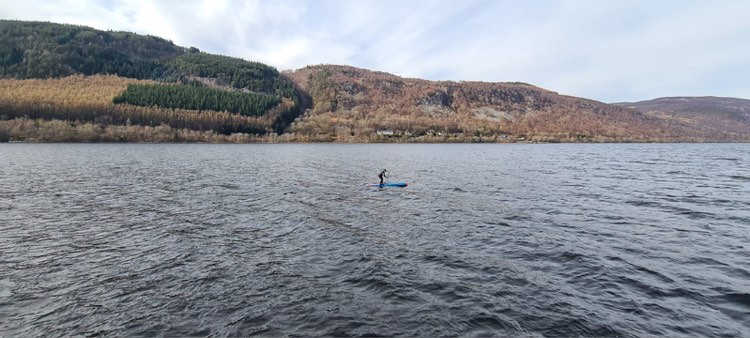
>Follow Mark on Instagram Here<
